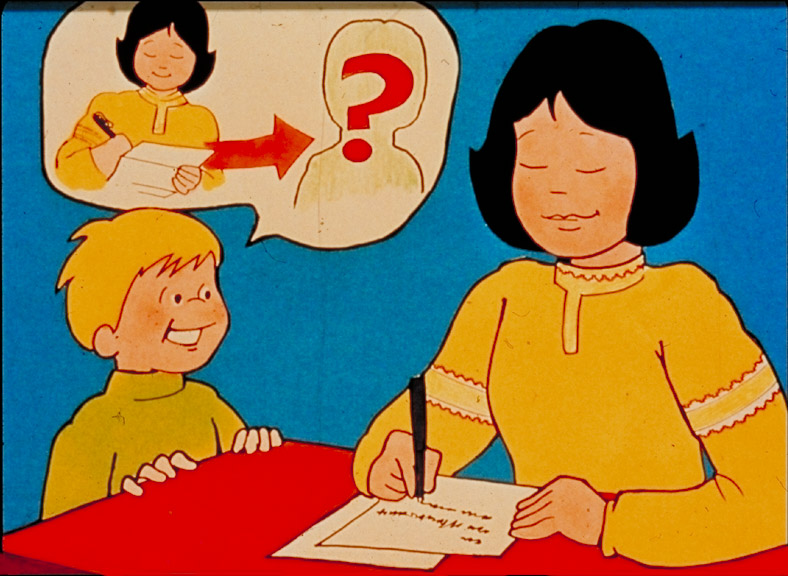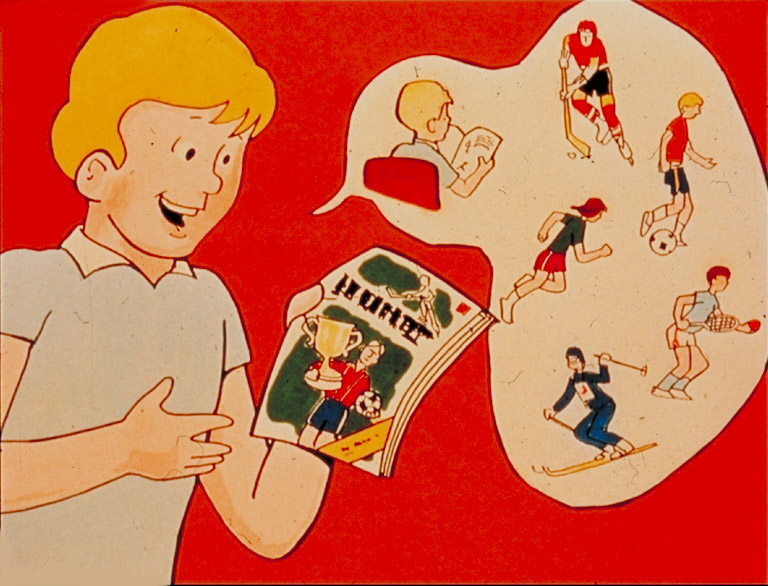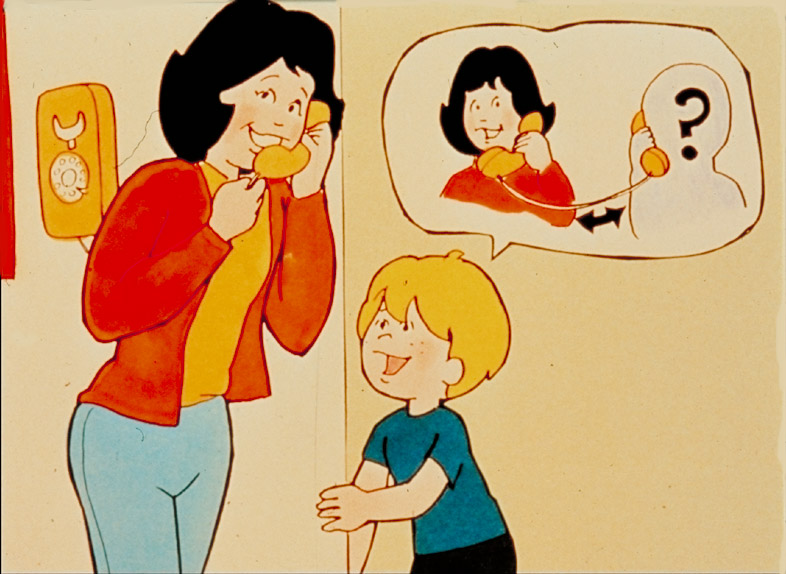
In Lesson 3 you will be introduced to some new information about verbs and pronouns, as follows:
- Verbs – a Group I є-ють, е-уть auxiliary verb with slightly irregular conjugation
- Pronouns – personal pronouns as used with the Instrumental Case
This lesson adds one new verb to your list of Group I є-ють, е-уть verbs. This is the verb розмовляти, which means 'to converse' or 'to speak with' someone. Although it is similar to the verb говорити (to speak), this verb always implies that there is a dialogue taking place with another person. The verb is usually followed by the preposition з (зо, зі) plus a noun in the Instrumental Case.
| я розмовляю |
ми розмовляємо |
| ти розмовляєш |
ви розмовляєте |
| він, вона розмовляє |
вони розмовляють |
VIII. Exercise 3.i
Insert the proper form of the verb розмовляти in the sentences below.
1. Ми _______________________ з Марусею.
2. Я _______________________ з мамою.
3. Ми ______________________ з учителем.
4. Вони _____________________ з татом.
5. Наталка ______________________ з Іваном.
6. Чи ти _______________________ з паном Івасюком?
7. Хто _______________________ з панною Жук?
8. Дівчата, це добре, що ви _________________________ з хлопцем.
Auxiliary Verbs You learned in Unit II that verbs are action words which refer to the subject of the sentence and act upon the object of the sentence. Sometimes, verbs need the help of another verb, an auxiliary verb, to form the tense, mood or voice of the sentence. Auxiliary verbs are often called ‘helping verbs'.
Examples of auxiliary verbs in English are to have, to be, to do, will, shall, would, should, can, may, might, and could.
In Unit VIII you are introduced to an auxiliary verb belonging to the Group I Conjugation. The verb is хотіти (to want).
Until now, you have conjugated Group I verbs by dropping the infinitive ending ти before adding the verb endings. The verb хотіти is slightly irregular in that the ending тіти is dropped. The consonant ч is added to the stem хо before the verb is conjugated. Therefore the stem becomes хоч, as illustrated below.
| singular |
|
plural |
| |
|
|
| я хоч + у |
|
ми хоч + емо |
| ти хоч + еш |
|
ви хоч + ете |
| він, вона, воно хоч + е |
|
вони хоч + уть |
The auxiliary verb ‘to want' follows the same grammatical rule in English and Ukrainian: the auxiliary verb is conjugated, while the second verb remains in its infinitive form.
Я хочу грати. --- I want to play.
Мама хоче розмовляти. --- Mother wants to talk.
Дівчата хочуть іти. --- Girls want to go.
Ми хочемо жити. --- We want to live.
Ви хочете телефонувати. --- You want to call.
Ти хочеш слухати. --- You want to listen.
VIII. Exercise 3.ii
Insert the correct form of the verb хотіти in the spaces below.
- Ми __________співати, а він ____________грати.
- Хлопці ___________ розмовляти, а дівчата _____________слухати.
- Руслан тут __________ жити, а тато ____________жити у Вікторії.
- Я ___________читати, а Орися _____________грати в теніс.
- Ти ___________іти додому, а я ___________розмовляти.
VIII. Exercise 3.iii
Complete the exercise below by inserting the correct form of the verb хотіти. Underline the second verb in its infinitive form.
- Хто хоче жити в Саскатуні?
- До кого ти ______________ писати е-листи?
- З ким хлопці _________________ грати в баскетбол у неділю?
- Дитина _____________ телефонувати до тата.
- Студенти ________________ танцювати полтавські танці.
- Володимир не ______________ читати журнал.
- Ми _________________ розмовляти з Романом.
- Я ______________ грати у футбол, а не в гокей.
- З ким ви __________________ йти додому, діти?
- Про кого Наталка й Андрій так часто _____________ говорити?
- Я ____________ читати про провінції.
Conversations Between Friends
Conversations between close friends and family are often informal. They do not follow the same rules of etiquette which apply to respected acquaintances, persons of status or the elderly. A sample conversation between friends is given below. There are some differences to note, as shown below.
1. Greeting: Добридень or Добрий день is replaced with Привіт, a more informal greeting between close friends (much the same as saying ‘Hi' in English).
2. General inquiry: Як ся маєш? or Як ся маєте? is replaced by the more casual Як справи? similar to the English ‘How are things?', or the phrase А як ти? meaning ‘And how are you?'. (Recall that the use of the pronoun ти in Ukrainian culture indicates a comfortable or close relationship between individuals.)
VIII. Exercise 3.iv
Read the phone conversation below.

Create a new dialogue in the space provided below by inserting new words for those which have been underlined.
________________________________________________________________
________________________________________________________________
________________________________________________________________
________________________________________________________________
________________________________________________________________
________________________________________________________________
________________________________________________________________
________________________________________________________________
________________________________________________________________
Pronouns, like nouns, follow cases and corresponding forms. Earlier you were introduced to the interrogative pronoun хто, as well as the personal pronouns я, ти, він, вона, воно, ми, ви, вони in relation to the Nominative, Genitive and Accusative Cases.
Називний Відмінок
Nominative Case
| Тепер я читаю. |
 |
|
| Хто читає? |
Я читаю. |
Ми читаємо |
| |
Ти читаєш. |
Ви читаєте |
| |
Він читає. |
Вони читають |
| |
Вона читає. |
|
Родовий відмінок
Genitive Case
You were introduced to the use of the preposition до with nouns earlier in this course. When working with animate nouns and pronouns, the question До кого? (To whom?) is used.You will note that after this preposition, personal pronouns я, ти, він, вона change to мене, тебе, нього, неї.
| До кого ти пишеш, Оленко? |
 |
|
1. хто --- я
до кого --- до мене
Хто телефонує до мене?
2. хто --- ти
до кого --- до тебе
Я йду до тебе, не до Івана.
3. хто --- він
до кого --- до нього
Таня пише до нього щодня.
4. хто --- вона
до кого --- до неї
Коли Степан телефонує до неї?
Знахідний Відмінок
Accusative Case
You were introduced to the use of the preposition про with inanimate (non-living) nouns earlier in this course.
Про що ти читаєш?
| Я читаю про спорт. |
 |
|
When working with animate nouns and pronouns, the question Про що?(About what?) changes to Про кого? (About whom?). Study the examples given below. Note that after the preposition про, the personal pronouns я, ти, він, вона change in the same way as for the Genitive Case - мене, тебе, нього, неї.
1. хто --- я
про кого --- про мене
Ти говориш про мене, так?
2. хто --- ти
про кого --- про тебе
Мама говорить про тебе.
3. хто --- він
про кого --- про нього
Вони розмовляють про нього.
4. хто --- вона
про кого --- про неї
Степан читає про неї в листі.
Орудний Відмінок
Instrumental Case
In this Unit, you will learn how personal pronouns are changed in the Instrumental Case. Recall the following question from the dialogue:
| З ким ти розмовляєш, Оленко? |
 |
|
You were introduced to the use of the preposition з (зі, зо) with nouns in the Instrumental Case earlier in this course. When working with animate nouns and pronouns in the Instrumental Case, the question З ким? (With whom?) is used. Note that personal pronouns я, ти, він, вона change to мною, тобою, ним, нею in the Instrumental Case.
The word хто changes to ким (with whom) when it is used with the preposition з.
1. хто --- я
з ким --- зі мною
Чи ти йдеш зі* мною на концерт?
2. хто --- ти
з ким --- з тобою
Учителька хоче говорити з тобою.
3. хто --- він
з ким --- з ним
Катруся йде з ним додому.
4. хто --- вона
з ким --- з нею
Оксана живе з нею в Едмонтоні.
* Note that in the phrase зі мною we have added the vowel і to the preposition з. This is done to ease pronunciation, if the word which follows begins with two consonants.
VIII. Exercise 3.v
Insert the appropriate phrases into the sentences. An example has been given.
- Хто розмовляє з ним? (він)
1. Хто хоче розмовляти зі ____________? (я)
2. Ти – Борис. Я розмовляю з ______________. (ти)
3. Ви розмовляєте з ________________. (вона)
4. Ні, я розмовляю з ________________. (ти)
5. Ірка не хоче розмовляти зі ______________. (я)
6. Ми розмовляємо з ______________. (він)
7. Чи Орися говорить з ______________? (вона)
8. А хто говорить з _____________? (ти)
VIII. Exercise 3.vi
Insert the phrases з нею or з ним into the sentences as shown in the example. When you have completed the exercise, read the entire exercise out loud.
- Тато розмовляє з мамою. Тато розмовляє з нею.
- Я розмовляю з татом. Я розмовляю з ним.
1. |
Хлопці розмовляють з Оленкою. |
|
Хлопці розмовляють з ____________________________. |
|
|
2. |
Чи ви розмовляєте з учителькою? |
|
Так, ми розмовляємо з ____________________________. |
|
|
3. |
Чи ви розмовляєте з Петриком? |
|
Так, ми розмовляємо з ____________________________. |
|
|
4. |
Ми розмовляємо з Орисею. |
|
Ми розмовляємо з ____________________________. |
|
|
5. |
Оленка розмовляє зі Степаном. |
|
Оленка розмовляє з ____________________________. |
|
|
6. |
Вони розмовляють з учителем. |
|
Вони розмовляють з ____________________________. |
|
|
7. |
Чи ти розмовляєш з дівчиною? |
|
Так, я розмовляю з ____________________________. |
|
|
8. |
Ти розмовляєш з дідом. |
|
Ти розмовляєш з ____________________________. |
|







